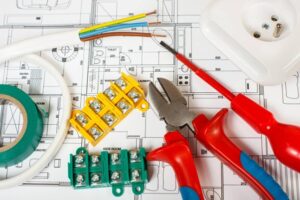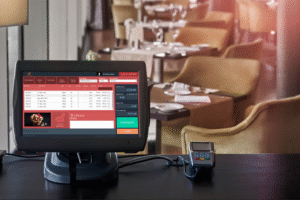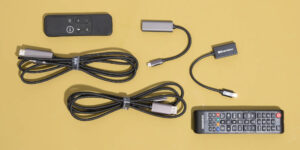How to Set Up a Digital Language Lab: A Guide to Hardware, Software, and Budgeting
In today’s fast-paced, technology-driven world, language learning has evolved far beyond traditional classrooms. Digital language labs provide an immersive, interactive,...

In today’s fast-paced, technology-driven world, language learning has evolved far beyond traditional classrooms. Digital language labs provide an immersive, interactive, and effective way to help learners acquire new languages efficiently. Setting up a digital language lab requires careful planning, the right hardware and software, and a realistic budget. This comprehensive guide will walk you through everything you need to know to create a successful digital language lab that enhances learning experiences and maximizes educational outcomes.
What Is a Digital Language Lab?
A digital language lab is a specialized learning environment equipped with technology that facilitates language instruction through multimedia tools, interactive activities, and real-time communication. Unlike traditional language labs that rely on analog equipment, digital labs leverage computers, tablets, software applications, and networked systems to deliver dynamic lessons, pronunciation practice, listening comprehension, and speaking exercises.
Step 1: Assess Your Needs and Goals
Before purchasing equipment or software, it’s crucial to clearly define the objectives of your language lab. Consider:
- Number of learners: How many students will use the lab simultaneously?
- Languages offered: Which languages will be taught?
- Teaching style: Will the lab support self-paced learning, instructor-led sessions, or blended learning?
- Budget constraints: What is your available funding?
Answering these questions will guide your choices for hardware, software, and infrastructure.
Step 2: Hardware Requirements for a Digital Language Lab
The backbone of any digital language lab is its hardware. Here’s a rundown of essential components:
- Computers or Tablets:
Each learner needs access to a device. Desktops or laptops are common, but tablets offer portability and touch interaction. Choose devices with good audio and video capabilities, sufficient RAM (at least 8GB), and fast processors to handle multimedia content smoothly. - Headphones with Microphones:
Quality headsets are vital for clear listening and speaking practice. Noise-cancelling microphones reduce background noise and improve communication accuracy. - Central Server or Cloud Infrastructure:
A local server can manage software, store lesson content, and monitor progress. Alternatively, cloud-based solutions reduce upfront infrastructure costs and offer scalability. - Networking Equipment:
A reliable network ensures smooth connectivity between devices. Invest in high-speed routers, switches, and sufficient bandwidth. - Interactive Displays or Projectors:
These enable instructors to showcase lessons, visuals, or videos to the whole class, making sessions more engaging. - Recording Equipment (Optional):
For language labs focusing on pronunciation and speaking skills, recording devices allow learners to playback and assess their spoken language.
Step 3: Choosing the Right Software
The software is the heart of your digital language lab. Look for solutions that offer:
- Multi-language support: The software should cover all languages taught in your program.
- Interactive exercises: Listening, speaking, reading, and writing activities that adapt to learners’ levels.
- Real-time monitoring: Teachers should track students’ progress and provide instant feedback.
- Communication tools: Features like voice chat, video conferencing, and group discussions enhance interaction.
- Content management: Easy uploading and organizing of lesson materials.
- User-friendly interface: Both students and teachers should find it easy to navigate.
Popular digital language lab software includes Rosetta Stone Classroom, Sanako Study, Language Lab Cloud, and Vocaroo for simple voice recording needs. Many solutions offer trial versions—use these to test compatibility with your hardware and teaching style.
Step 4: Budgeting Your Digital Language Lab
Budgeting is a crucial step in setting up a digital language lab. Here’s a typical breakdown of costs:
- Hardware:
- Computers/Tablets: $300 to $1,000+ per device
- Headphones with microphones: $20 to $100 each
- Networking equipment: $200 to $1,000 depending on scale
- Projectors/Displays: $300 to $1,500+
- Computers/Tablets: $300 to $1,000+ per device
- Software:
- License fees vary from $500 to several thousand dollars annually depending on features and number of users.
- Some cloud-based software follows a subscription model (monthly or yearly).
- License fees vary from $500 to several thousand dollars annually depending on features and number of users.
- Installation and Setup:
- IT support for installation and configuration may cost $500 to $2,000.
- IT support for installation and configuration may cost $500 to $2,000.
- Maintenance and Upgrades:
- Allocate 10-15% of your total initial investment annually for updates, repairs, and tech support.
- Allocate 10-15% of your total initial investment annually for updates, repairs, and tech support.
Cost-saving tips:
- Use refurbished devices where feasible.
- Leverage open-source or free language lab software for smaller budgets.
- Opt for cloud-based solutions to reduce upfront infrastructure costs.
Step 5: Setting Up and Training Staff
Once the hardware and software are in place:
- Configure the network and devices: Ensure all devices are connected and software is properly installed and updated.
- Train instructors: Organize workshops so teachers learn how to use the digital lab tools effectively. Familiarity with the software and troubleshooting basics is essential.
- Create lesson plans: Adapt existing curricula to leverage the technology’s interactive features.
- Pilot test: Run a trial session to identify and fix any technical or operational issues before full rollout.
Benefits of a Digital Language Lab
- Personalized learning: Technology adapts to individual learner speeds and styles.
- Enhanced engagement: Multimedia tools and interactive activities increase motivation.
- Immediate feedback: Teachers can monitor progress and provide instant corrections.
- Flexible access: Cloud-based labs allow learners to practice anytime, anywhere.
- Resource efficiency: Digital content reduces dependency on physical materials.
Final Thoughts
Setting up a digital language lab can transform how languages are taught and learned, making the process more efficient, engaging, and effective. By carefully selecting the right hardware and software, planning your budget thoughtfully, and training staff adequately, you can create a state-of-the-art learning environment that meets modern educational demands.
Start with clear goals, choose reliable equipment, invest in quality software, and remember that ongoing support and updates are vital to keep your digital language lab running smoothly for years to come.






